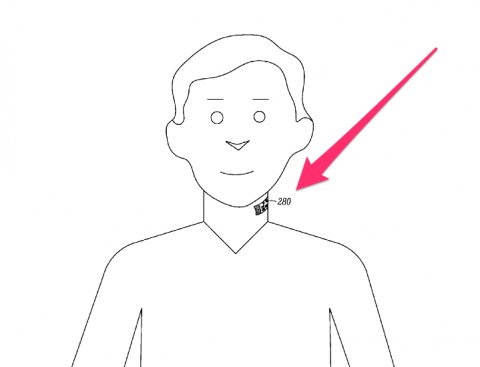
Temporary tattoos – those slimy, peel off appropriations of anchors and Disney cartoon characters – were a highlight of many of our youths. Now, unlikely as it may sound, they could also be the next big thing in mHealth, thanks to a recent breakthrough at the University of Texas.
A team of researchers at the university’s Cockrell School of Engineering has invented a new way of producing ultra-thin wearable electronic patches that can be used to monitor the wearer’s vital signs, including heart rate, hydration level, muscle movement, temperature and brain activity.
The new process, as revealed in the September issue of Advanced Materials, cuts the manufacturing process for these patches from several days to just 20 minutes, while doing away with tricky necessities like a clean room (an environment used in manufacturing or scientific research with a low level of environmental pollutants).
The aim, according to assistant professor Nanshu Lu, is to construct disposable tattoo-like health monitoring patches for the mass production of epidermal electronics.
Electronic tattoos, of course, are not an entirely new invention. Lu himself helped to develop the technology back in 2011, working with Professor John A Rogers from the University of Illinois on “stretchable, ultrathin electronics that cling to skin like a temporary tattoo”.
These, according to Rogers’ team, could be used to “measure electrical activity produced by the heart, brain and skeletal muscles”, which he suggested could be used for “an unusual type of computer game controller”.
Clearly, the technology also had medical implications: reports back in 2011 suggested the tattoos could be used to measure heart activity in prematures babies or sleep apnea, in a noninvasive way. Rogers claimed it might also be possible to use the tattoos to stimulate the muscles of physical rehabilitation patients.
Since 2011, this technology has continued to develop. The first wave of electronic tattoos were designed to be applied to a thin rubber backing, which, Rogers told MIT Technology Review, was “fine for an office environment but if you wanted to go swimming or take a shower they weren’t able to hold up”.
To address this, in 2013 his team figured out how to print the electronics directly onto human skin, making the electronic tattoo significantly more durable. Speaking at the time of the launch, Rogers said that these new electronic tattoos could be used to monitor healing wounds near the skin’s surface, wirelessly sending the information collected back to your doctor.
The medical benefits of electronic tattoos, then, are plain to see: not only do they pick up body signals that are stronger than in existing medical devices, they are also incredibly convenient, with no bulky monitoring device to carry around with you. That makes them perfect for babies, children and the elderly.
The big problem, until now, was that they were expensive and complicated to produce. This is something that the University of Texas’ recent breakthrough, which uses freeform manufacturing, a technique similar to 3D printing, changes, radically bringing down the cost per device.
“One of the most attractive aspects of epidermal electronics is their ability to be disposable,” Lu told the University of Texas News. “If you can make them inexpensively, say for $1, then more people will be able to use them more frequently. This will open the door for a number of mobile medical applications and beyond.”
Leaving mHealth aside, there are a number of other potential uses for electronic tattoos.
Californian company Biolinq (formerly Electrozyme), for example, has worked on disposable electronic tattoos for athletes, analysing their sweat to measure lactate levels and hydration. In doing so, the company claims athletes can boost their performance levels and endurance, while minimising fatigue, recovery time and the likelihood of injury. A release date for their product is set for later this year.
Google, meanwhile, has filed a patent for “an electronic skin tattoo capable of being applied to a throat region of a body”, featuring an embedded microphone that can connect to a nearby mobile phone, relaying conversation.
In its application, Google suggests the device might be used for security guards working in noisy environments. “Mobile communication devices are often operated in noisy environments. For example, large stadiums, busy streets, restaurants, and emergency situations can be extremely loud and include varying frequencies of acoustic noise,” the application explains (via Business Insider).
“Communication can reasonably be improved and even enhanced with a method and system for reducing the acoustic noise in such environments and contexts.”
Slightly less chirpily, Google claims the device could also be used as a lie detector. “The electronic skin tattoo 200 can further include a galvanic skin response detector to detect skin resistance of a user,” it says. “It is contemplated that a user that may be nervous or engaging in speaking falsehoods may exhibit different galvanic skin response than a more confident, truth telling individual.”
For the moment – thankfully – the tattoo lie detector remains in the world of theory. But other electronic tattoos are already out there in the wild and again Google is at the fore.
In July 2014 Google’s Motorola division announced the launch of “digital tattoo technology” that allows users to unlock their Moto X phones by touch. “Made of super thin, flexible materials, based on VivaLnk’s eSkin technology, each digital tattoo is designed to unlock your phone with just a touch of your Moto X to the tattoo, no passwords required,” Motorola announced on its blog.
“The nickel-sized tattoo is adhesive, lasts for five days, and is made to stay on through showering, swimming, and vigorous activities like jogging. And it’s beautiful – with a shimmering, intricate design.”
Putting PR bias to one side the VivaLnk is, genuinely, a rather beautiful thing. Sadly, though, I’ve never seen anyone wearing one. That doesn’t mean it has failed, of course: it is still very early days for electronic tattoo technology like the VivaLnk.
In fact, with electronic tattoo technology getting cheaper and easier to manufacture all the time – and the number of potential uses growing – it seems inevitable that consumers will soon welcome epidermal electronics into their lives, be it via their doctor, their favourite video game or even their mobile phone manufacturer.
